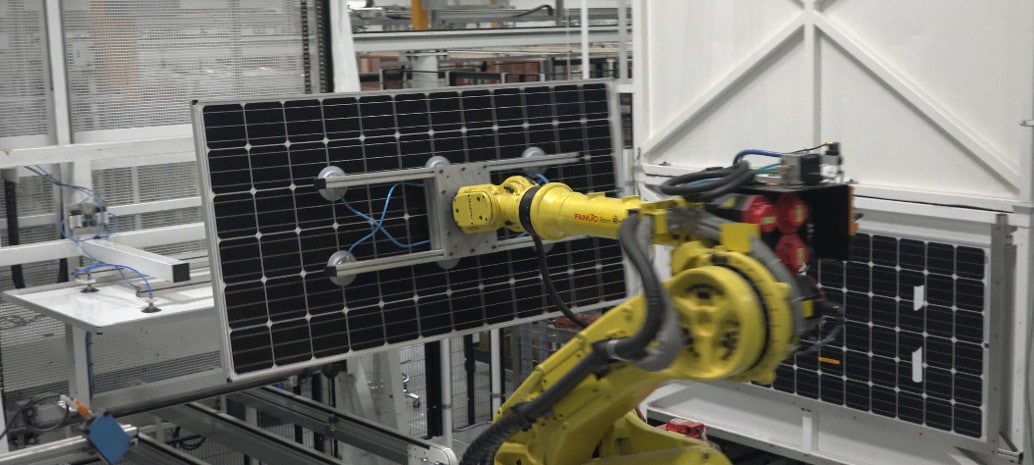The German/American solar manufacturer SolarWorld AG has published its final financial report for 2016. The report confirms the preliminary results released in February.
The company saw revenue increase by 5% year-on-year to $866 million last year, more of the half of which came from the U.S. market.
Furthermore, SolarWorld posted an EBITDA loss of $28 million for last year, while in 2015 it reported a profit of $44 million.
The company reported a full year operating loss of $106 million, for a -12% operating margin, as previously reported in the preliminary results. At the end of 2016, the company had equity to the amount of $131 million and net indebtedness of $326 million.
“There has been no shortage of challenges in the international solar business. The second half of 2016 was influenced by market turbulences and increased dumping. This development clearly left its mark on our company, too,” explained SolarWorld CEO Frank Asbeck.
The company’s CEO also said that the in the first half of 2016 the performance of the company was good and that especially in the second quarter its results were positive. The drastic price drop registered in the second half of last year, however, has negatively impacted its financial figures and has not been compensated through cost reduction. Asbeck added that SolarWorld has significantly reduced its inventory with a sales offensive in late 2016.
In February, Asbeck announced that SolarWorld intended to focus on monocrystalline PERC products in the future and to exit the multi crystalline business entirey. This was also confirmed in the preliminary results. The first steps in this direction have already been made, with the concentration of the manufacturing activities at the company’s production sites in Germany. Ingot and cell production will be located in Arnstadt, Germany, while wafer and module manufacturing will be concentrated in Freiberg.
The module factory in Freiberg will be halted or relocated this year. The company said it will continue to manufacture bifacial modules in the future, as part of its plan to focus on monocrystalline products.
“Focusing is the leverage for more radical cost reductions than were previously possible,” wrote Asbeck in the report. The company aims to reduce costs in almost all its divisions. The plan aims at expanding the most competitive production areas in order to achieve economies of scale more quickly, eliminate redundancies and simplify processes.
At the same time, SolarWorld said it will cut 400 full-time jobs over the next two years. Last year, the company’s workforce increased to 3,000.
“2017 will be a year of transition, said Asbeck, where we lay the foundation for future growth. Saving costs alone is not enough to prevail in such a competitive market.”
Asbeck added the company is investing a two-digit million euro amount in 2017 at its production sites in Germany and Hillsboro, Oregon.
For the current fiscal year, the manufacturer expects an increase in shipments, while revenue is forecast to remain at about the previous year’s level. Furthermore, the company said it will improve its operating figures, although operating margins will still be negative. Operating results should be positive again in 2019, Asbeck stated. In 2019, SolarWorld also intends to increase its annual module production capacity to 2 GW.
A sword of Damocles, however, is hanging over SolarWorld: the Hemlock dispute. Last summer, a U.S. court ordered Solarword to pay damages of $793 million to U.S. silicon manufacturer Hemlock. That sum is made up of $585 million in damages and $208 million in interest, due to breaches of contracts by SolarWorlds subsidiary Deutsche Solar, which now operates under the name Solarworld Industries Sachsen, according to the U.S. silicon company.
The German company lodged an appeal against court judgment in August. At the time, Asbeck said he was confident that the U.S. silicon manufacturer would not receive recognition of any judgements in German courts.
SolarWorld board said the company’s overall economic position is “very difficult“. If the implemented strategic measures do not have a positive impact on its earning situation, the board stressed, delays or difficulties may not be excluded. “Ongoing negative operating cash flow would have further negative impact on the group’s liquidity position, limiting our ability to act,” said the company in the report.
This content is protected by copyright and may not be reused. If you want to cooperate with us and would like to reuse some of our content, please contact: editors@pv-magazine.com.









By submitting this form you agree to pv magazine using your data for the purposes of publishing your comment.
Your personal data will only be disclosed or otherwise transmitted to third parties for the purposes of spam filtering or if this is necessary for technical maintenance of the website. Any other transfer to third parties will not take place unless this is justified on the basis of applicable data protection regulations or if pv magazine is legally obliged to do so.
You may revoke this consent at any time with effect for the future, in which case your personal data will be deleted immediately. Otherwise, your data will be deleted if pv magazine has processed your request or the purpose of data storage is fulfilled.
Further information on data privacy can be found in our Data Protection Policy.